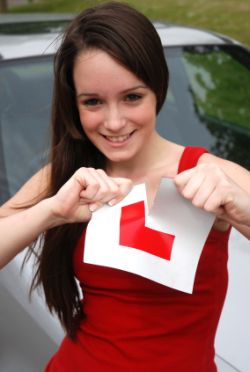What happens after the practical test
At the end of the test, you may have had your driving instructor in the back but taking no part in the test. If not, you can call them over before you receive the feedback and result to your test.
The purpose for this is that they can listen to the result and the feedback that you received during the course of the test. The examiner will then tell you how you performed (pass or fail) and then explain why they have come to that decision.
If you fail the test, they will tell you the feedback as to what you should do to prepare for the next test and any particular areas that need attention (most likely you had at least one serious fault to correct before the next test) although you could have failed for 16 or more minor errors.
You must leave a gap of ten working days before tests, so this does mean that you can have a couple more lessons to work on the areas you failed in before taking another test. Hopefully you will pass next time!
If you do pass the test, then congratulations! Depending when you received your provisional license, you can either have the full license issued automatically, or choose not to use that service. If you had a provisional license issued before 1st March 2004, you will get a pass certificate from the examiner, which tells you what to do: essentially send your licence and fee to the DVLA who then issue you with a full driving licence.
Related Articles...
The risk of accidents - some statistics
No-one wants to think that they will be involved in an accident, but being aware that an accident could happen to you and the statistics is important. Accidents happen to ordinary people, so anyone...
What a slippery road surface sign could mean
The problem with a slippery road surface sign is this: whilst you know what it means, you don't know what it means. If that sounds confusing, then the point is simply this - what is it that is...
Driving Theory Test
Until relatively recently in driving history, there was no theory test. From the time the first person passed a driving test in the UK in 1935 through to 1996, there was no separate theory test. ...
Ways to drive in a greener way
There are several methods that you can employ to ensure that you drive in a green way. The advantages of this are that you consume less fuel pro rata so it is good for your bank balance too, and...
Tips on braking on snow and ice
Braking on snow and ice takes a lot longer than it does on a normal road in ordinary conditions. But you might be very surprised at how long it can take.
Infact tests have shown that it can...
What to do if horses are on the road
It may sound quite rare, but actually on country journeys you will from time to time encounter horses and their riders using the road. And you may also come across other animals too.
When you...
Cost of a driving theory test
If you are learning to drive a car in the UK, then there is not just the practical test to think about.
You must also pass a theory test in order to be able to take the driving practical test...
What to look for when you see a vehicle
Here is a simple check list of things to take into account when you check a used vehicle that you are considering purchasing.
Firstly, look at the engine carefully, and see if you think it has...
Tips on joining a motorway
Joining and leaving the motorway are generally considered the more tricky elements of the journey. When it comes to leaving the motorway, it is all about selecting the right exit and moving over to...
Your steering system
When it comes to driving the car, it is safe to say that the steering wheel is clearly an essential part! If you can't steer your vehicle, then you clearly cannot drive it.
There are two...
Back to home page of driving theory test questions

